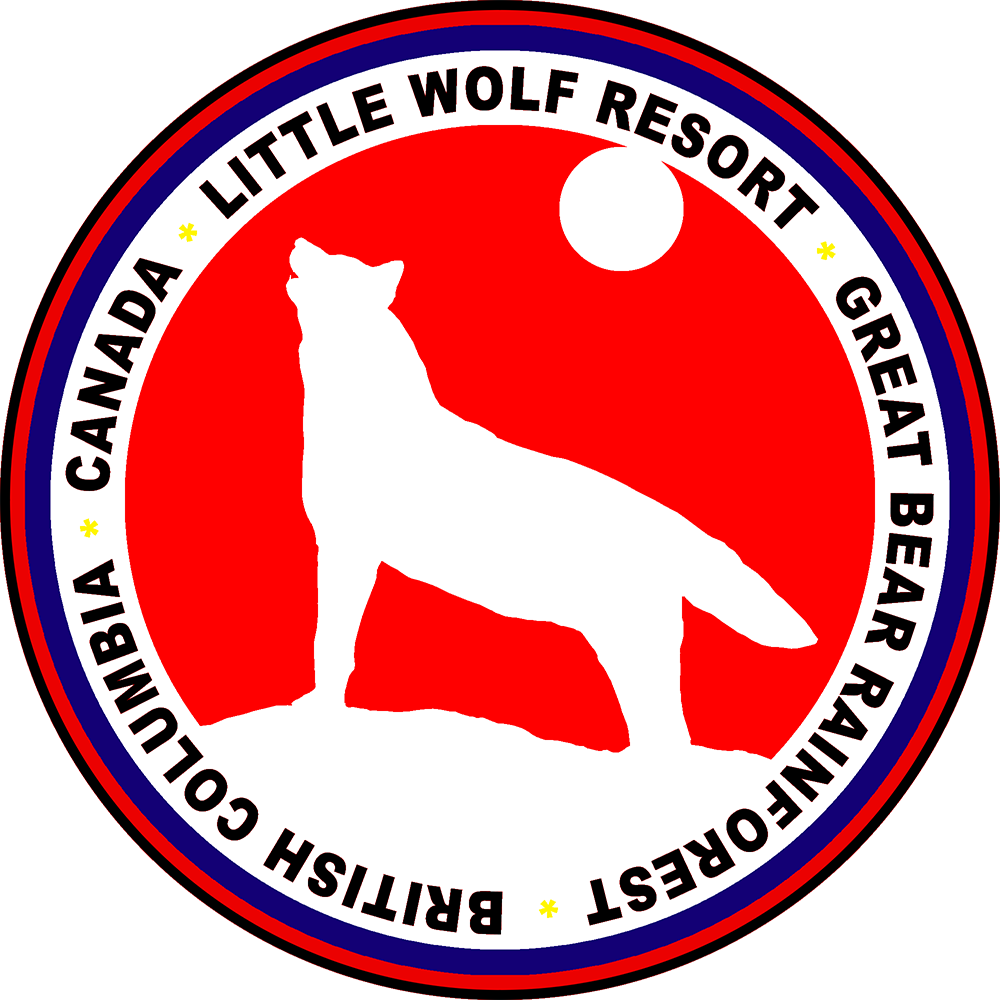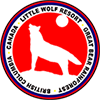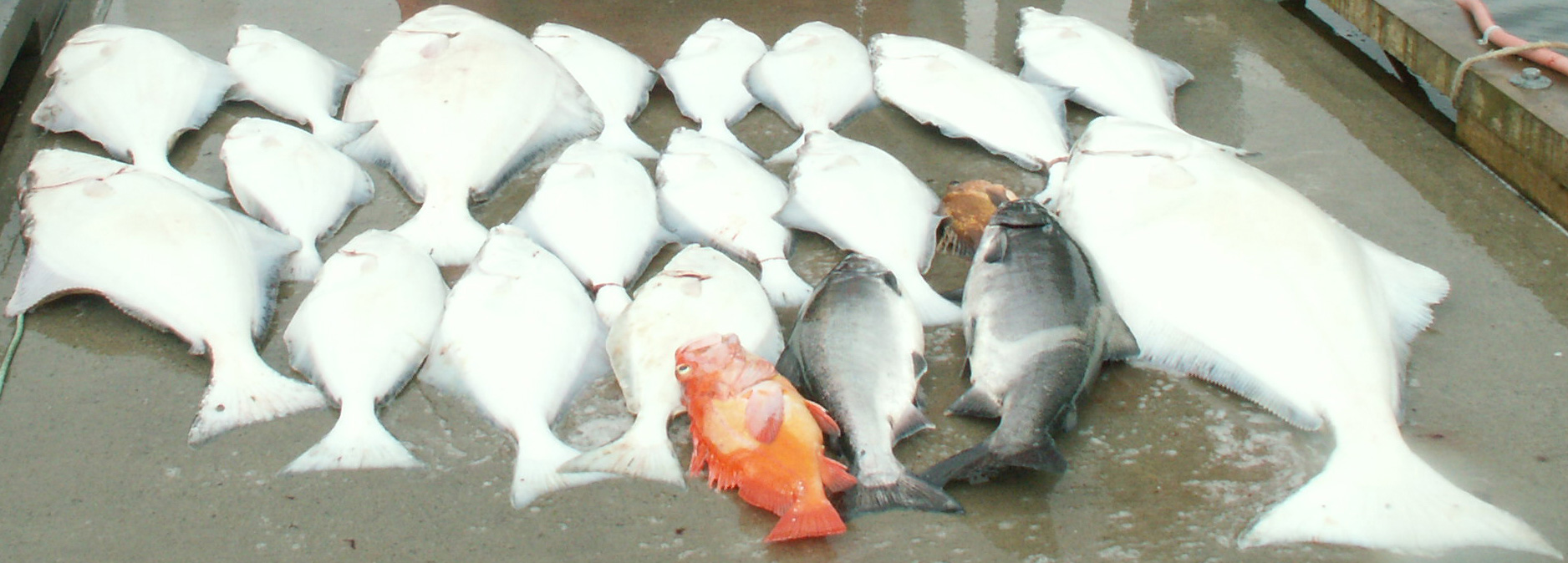“Little Wolf Resort” is located on several miles of private riverfront on the world-famous Skeena River. The mighty Skeena River is winding around the peninsula of “Little Wolf Resort” and is offering the best opportunities to fish for all five species of Pacific Salmon and the biggest, wildest Steelhead-Trout on the planet! As one of the highlights in our extensive wilderness adventure program, we are offering guided fishing activities, in collaboration with a selection of the most experienced and specialized local fishing guides, on all rivers of the world-famous Skeena-, Kitimat- and Nass-River region, by drift-boat, jet-boat and helicopter, as well as guided fishing tours on the Pacific Ocean, in front of Kitimat and Prince Rupert. Taking-off directly from our private landing field, helicopter fishing tours to remote coastal rivers or scenic helicopter fly-outs can be undertaken!
“Little Wolf Resort” also offers private nature trails for forest bathing activities, along several miles of private shoreline on the churning Skeena River!
“Little Wolf Resort” is located on several miles of private riverfront on the world-famous Skeena River. The mighty Skeena River is winding around the peninsula of “Little Wolf Resort” and is offering the best opportunities to fish for all five species of Pacific Salmon and the biggest, wildest Steelhead-Trout on the planet! As one of the highlights in our extensive wilderness adventure program, we are offering guided fishing activities, in collaboration with a selection of the most experienced and specialized local fishing guides, on all rivers of the world-famous Skeena-, Kitimat- and Nass-River region, by drift-boat, jet-boat and helicopter, as well as guided fishing tours on the Pacific Ocean, in front of Kitimat and Prince Rupert. Taking-off directly from our private landing field, helicopter fishing tours to remote coastal rivers or scenic helicopter fly-outs can be undertaken!
“Little Wolf Resort” also offers private nature trails for forest bathing activities, along several miles of private shoreline on the churning Skeena River!
Activities
Ocean Fishing
Ocean-fishing trips on the Pacific Ocean can be undertaken at two different outstanding locations: Prince Rupert or Kitimat. The perfect time for saltwater Chinook-Salmon is end of May to the beginning of August. Saltwater Coho-Salmon are caught until the end of September, as well as giant Halibut, beautifully orange-coloured Red Snapper, Cod, Dungeness Crab and other bottom dwellers. Ocean-fishing tours take place in a secluded fjord close to Prince Rupert, or south of Kitimat, within the no-mens land Estavan, or along the islands close to the Alaskan border. Different sizes of high- quality ocean-fishing vessels, offering a capacity of 4 fishermen per boat or big aluminum boats for groups of up to 12 people are available!
Ocean Fishing
Ocean-fishing trips on the Pacific Ocean can be undertaken at two different outstanding locations: Prince Rupert or Kitimat. The perfect time for saltwater Chinook-Salmon is end of May to the beginning of August. Saltwater Coho-Salmon are caught until the end of September, as well as giant Halibut, beautifully orange-coloured Red Snapper, Cod, Dungeness Crab and other bottom dwellers. Ocean-fishing tours take place in a secluded fjord close to Prince Rupert, or south of Kitimat, within the no-mens land Estavan, or along the islands close to the Alaskan border. Different sizes of high- quality ocean-fishing vessels, offering a capacity of 4 fishermen per boat or big aluminum boats for groups of up to 12 people are available!

Whale Watching
The Gray-Whale migration from Mexico begins to arrive along the West Coast of British Columbia in early February and continues until late April. Humpback-Whales are seen throughout the season, mostly in August. The Douglas Channel in front of Kitimat is home to Killer-Whales, arriving in July and chasing the Salmon that is running into the coastal rivers. There will be a high chance of seeing Orca- , Gray- and Humpback-Whales, Sea Lions, Eagles, Sea Otters and other amazing wildlife on the ocean! The best time to watch wildlife activities on the ocean is during the summer months. June, July and August are the peak times for whale-watching activities. Whale-watching tours take place on the Pacific Ocean, in front of Kitimat and in front of Prince Rupert.
Whale Watching
The Gray-Whale migration from Mexico begins to arrive along the West Coast of British Columbia in early February and continues until late April. Humpback-Whales are seen throughout the season, mostly in August. The Douglas Channel in front of Kitimat is home to Killer-Whales, arriving in July and chasing the Salmon that is running into the coastal rivers. There will be a high chance of seeing Orca- , Gray- and Humpback-Whales, Sea Lions, Eagles, Sea Otters and other amazing wildlife on the ocean! The best time to watch wildlife activities on the ocean is during the summer months. June, July and August are the peak times for whale-watching activities. Whale-watching tours take place on the Pacific Ocean, in front of Kitimat and in front of Prince Rupert.

Wild Animal Watching
“Little Wolf” is situated in the untouched wilderness of the “Great Bear Rainforest”, directly on the shoreline of the churning Skeena River. Follow the Wild Animal Trails along the river and through the rainforest, learn more about the different tree species, flowers, herbs and mushrooms and be fascinated of the natural beauty of “Little Wolf Resort”, situated close to the territory of the “Wolf Clan”. In Winter, several hundred wolves are crossing the frozen Skeena River every year, ambling through the forests of “Little Wolf Resort”. During the day, wildlife activities can be observed on the property. Watch Elk, Foxes and Coyotes, Eagles, Beavers, Seals, Moose, Deer, Snow Owls, Owls, Wild Ducks and Wild Geese, Ravens, Hummingbirds, local Birds and Black Bears, as well as the White Kermodie Bear, called “Spirit Bear”, on nature trails along the river, through the untouched rainforest and on wild-flower meadows, surrounded by scenic snow-capped mountains.
Wild Animal Watching
“Little Wolf” is situated in the untouched wilderness of the “Great Bear Rainforest”, directly on the shoreline of the churning Skeena River. Follow the Wild Animal Trails along the river and through the rainforest, learn more about the different tree species, flowers, herbs and mushrooms and be fascinated of the natural beauty of “Little Wolf Resort”, situated close to the territory of the “Wolf Clan”. In Winter, several hundred wolves are crossing the frozen Skeena River every year, ambling through the forests of “Little Wolf Resort”. During the day, wildlife activities can be observed on the property. Watch Elk, Foxes and Coyotes, Eagles, Beavers, Seals, Moose, Deer, Snow Owls, Owls, Wild Ducks and Wild Geese, Ravens, Hummingbirds, local Birds and Black Bears, as well as the White Kermodie Bear, called “Spirit Bear”, on nature trails along the river, through the untouched rainforest and on wild-flower meadows, surrounded by scenic snow-capped mountains.

Sockeye Salmon
Spawning Grounds
In the ocean and at early migratory phase in the river system, Sockeye-Salmon often have a bluish back and silver sides, therefore called “Bluebacks”. When they reach the spawning grounds, they are very unique in appearance. Their colour turns into bright red with a green head. Therefore, they are also called “Red Salmon”. Major spawning runs are found in the Skeena, Fraser, Nass, Stikine, Taku and Alsek watersheds. Female Sockeye spawn over several days in 3 to 5 nests. The Sockeye-Salmon eggs will hatch after 6 to 9 weeks. Young Sockeye grow up in lakes where they feed on aquatic insects and plankton. The majority of Sockeye remain in the ocean for 2 years and return to spawn at the age of 4, but some may be 5-6 years old. The local Sockeye Salmon Spawning Grounds are located on a small river close to “Little Wolf Resort”.
Sockeye Salmon
Spawning Grounds
In the ocean and at early migratory phase in the river system, Sockeye-Salmon often have a bluish back and silver sides, therefore called “Bluebacks”. When they reach the spawning grounds, they are very unique in appearance. Their colour turns into bright red with a green head. Therefore, they are also called “Red Salmon”. Major spawning runs are found in the Skeena, Fraser, Nass, Stikine, Taku and Alsek watersheds. Female Sockeye spawn over several days in 3 to 5 nests. The Sockeye-Salmon eggs will hatch after 6 to 9 weeks. Young Sockeye grow up in lakes where they feed on aquatic insects and plankton. The majority of Sockeye remain in the ocean for 2 years and return to spawn at the age of 4, but some may be 5-6 years old. The local Sockeye Salmon Spawning Grounds are located on a small river close to “Little Wolf Resort”.

Giant Spruce Park
Within the Giant Spruce Park, close to Kitimat, the planet’s largest intact old growth coastal temperate rainforest can be visited. The Giant Spruce Park features a breath-taking stand of up to 800 year-old trees. One of the giant Spruce trees, measuring 11.2 meters in circumference, was registered in 1983 as the largest living Spruce tree in British Columbia. It is considered to be one of the oldest Spruce trees in the world! Take a walk along the numerous hiking trails and find out more about the tree population of Giant Spruce Park. Along the trails, Sitka Spruce Trees, Red Cedar Trees, Western Hemlock Trees and Fir Trees, as well as shrub layers of Devil’s Club, Salmonberry, Alaskan- and Oval-Leaf Blueberry, young Conifers, spiny Wood Ferns, Oak Ferns, Foam-Flowers, Twisted Stock and leafy Mosses can be found within the plant community.
Giant Spruce Park
Within the Giant Spruce Park, close to Kitimat, the planet’s largest intact old growth coastal temperate rainforest can be visited. The Giant Spruce Park features a breath-taking stand of up to 800 year-old trees. One of the giant Spruce trees, measuring 11.2 meters in circumference, was registered in 1983 as the largest living Spruce tree in British Columbia. It is considered to be one of the oldest Spruce trees in the world! Take a walk along the numerous hiking trails and find out more about the tree population of Giant Spruce Park. Along the trails, Sitka Spruce Trees, Red Cedar Trees, Western Hemlock Trees and Fir Trees, as well as shrub layers of Devil’s Club, Salmonberry, Alaskan- and Oval-Leaf Blueberry, young Conifers, spiny Wood Ferns, Oak Ferns, Foam-Flowers, Twisted Stock and leafy Mosses can be found within the plant community.

Nisga’a Memorial
Lava Bed
The Nisga’a Lava Bed is located within the Nass River Valley, about 80 kilometers north of Terrace. Hundreds of years ago, after the eruption of a volcano, the lava completely covered two Nisga’a villages. The lava bed features numerous waterfalls, pools, lava tubes, a volcanic crater, cinder cones of a volcano, a lava lake and a drowned forest, created by the lava flow. Now, after three hundred years, parts of the lava fields are smoothly covered with moss and wildflowers. Through the lava beds and the Nass River Valley the tour is leading to the beautiful harbour-town of Kincolith, home of the famous Crab-Feast, which is taking place every year in July. Numerous native villages, a suspension bridge and totem poles, representing the clans of the Nisga’a Valley can be visited in Canyon City.The Nisga’a Museum in Laxg̱alts’ap, showing a collection of over 330 native artifacts, is presenting one of the most important collections of Northwest Coast Aboriginal Art.
Nisga’a Memorial
Lava Bed
The Nisga’a Lava Bed is located within the Nass River Valley, about 80 kilometers north of Terrace. Hundreds of years ago, after the eruption of a volcano, the lava completely covered two Nisga’a villages. The lava bed features numerous waterfalls, pools, lava tubes, a volcanic crater, cinder cones of a volcano, a lava lake and a drowned forest, created by the lava flow. Now, after three hundred years, parts of the lava fields are smoothly covered with moss and wildflowers. Through the lava beds and the Nass River Valley the tour is leading to the beautiful harbour-town of Kincolith, home of the famous Crab-Feast, which is taking place every year in July. Numerous native villages, a suspension bridge and totem poles, representing the clans of the Nisga’a Valley can be visited in Canyon City.The Nisga’a Museum in Laxg̱alts’ap, showing a collection of over 330 native artifacts, is presenting one of the most important collections of Northwest Coast Aboriginal Art.

Tour to Hyder Alaska
A gravel road is leading through the endless rainforest, passing mushroom picking camps, the beautiful Dragon Lake, with its crystal-clear water and rivers, where you can watch the Sockeye-Salmon spawning. The town of Stewart is the famous filming location of the movie “Insomnia” (with Robert De Niro), next to the border to Hyder, Alaska. Hyder is a typical American town of the Wild West. Here, goldminers and adventurers found their home. On the Salmon River, visitors can watch Grizzly Bears catching Salmon that is migrating upstream. After enjoying the famous “Hyder-Riser”, a high-percentage Schnaps, at the Hyder-Bar, you will obtain the “Hyder-Riser Certificate”. The Salmon Glacier is the fifth biggest glacier in the world!
Tour to Hyder Alaska
A gravel road is leading through the endless rainforest, passing mushroom picking camps, the beautiful Dragon Lake, with its crystal-clear water and rivers, where you can watch the Sockeye-Salmon spawning. The town of Stewart is the famous filming location of the movie “Insomnia” (with Robert De Niro), next to the border to Hyder, Alaska. Hyder is a typical American town of the Wild West. Here, goldminers and adventurers found their home. On the Salmon River, visitors can watch Grizzly Bears catching Salmon that is migrating upstream. After enjoying the famous “Hyder-Riser”, a high-percentage Schnaps, at the Hyder-Bar, you will obtain the “Hyder-Riser Certificate”. The Salmon Glacier is the fifth biggest glacier in the world!

Tour to Hazelton
This tour, on the famous Yellowhead Highway, along the Skeena River, is leading through the village of Kitwanga, close to Hazelton. The valley is embedded into the massive mountain chain of the Seven-Sisters Peaks, reaching an elevation of 2786 meters. The settlement of Hazelton is situated on the famous Bulkley River. For 300 kilometers the river is cutting its way through the rocky barriers of the Coast Mountains. Carved totem poles can be visited on the tour. Ksan, a famous Historic Native Museum, is open for visitors, housing a famous carving school. There, Native artists are presenting the practices of Aboriginal carving. During the summertime, traditional dance performances are held every Friday evening. In Moricetown, visitors can observe the traditional Native methods of catching Salmon. The fish are pulled out of the water, using heavy hooks, that are tied to long fishing poles. The location is ideal for this fishing method, where the Bulkley River is churning through a spectacular, narrow canyon.
Tour to Hazelton
This tour, on the famous Yellowhead Highway, along the Skeena River, is leading through the village of Kitwanga, close to Hazelton. The valley is embedded into the massive mountain chain of the Seven-Sisters Peaks, reaching an elevation of 2786 meters. The settlement of Hazelton is situated on the famous Bulkley River. For 300 kilometers the river is cutting its way through the rocky barriers of the Coast Mountains. Carved totem poles can be visited on the tour. Ksan, a famous Historic Native Museum, is open for visitors, housing a famous carving school. There, Native artists are presenting the practices of Aboriginal carving. During the summertime, traditional dance performances are held every Friday evening. In Moricetown, visitors can observe the traditional Native methods of catching Salmon. The fish are pulled out of the water, using heavy hooks, that are tied to long fishing poles. The location is ideal for this fishing method, where the Bulkley River is churning through a spectacular, narrow canyon.
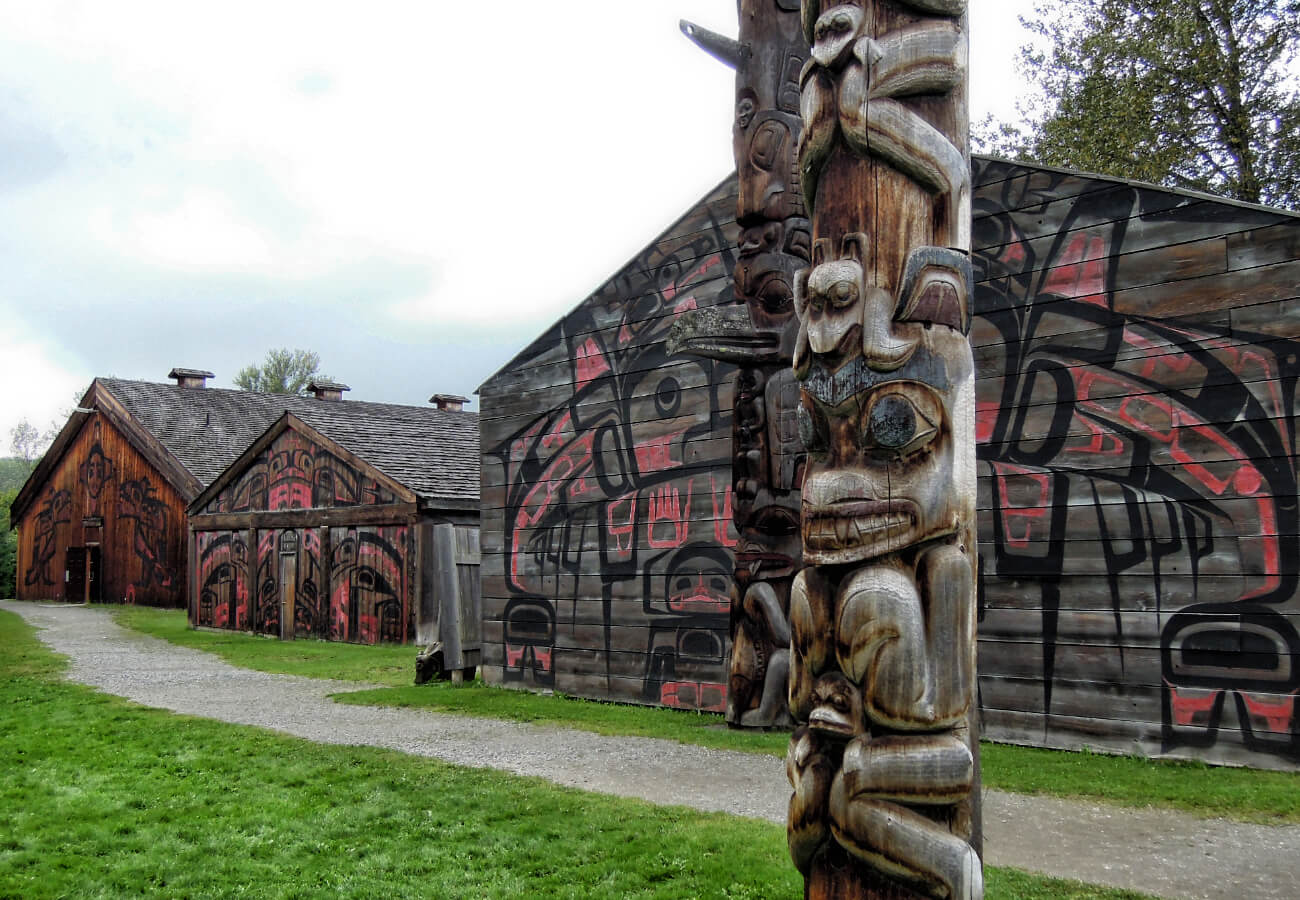
Lakelse Lake
On a tour from Terrace to Kitimat, hot springs and a big lake are inviting for recovery and relaxation. With warm, glacial water, with golden flakes, the Lakelse Lake is an ideal location for swimming activities on hot summer days! The quality of the crystal-clear, glacial water is outstanding, smoothens and heals your skin, while enjoying a bath in the lake! Public dressing rooms, washrooms, picknick tables and barbecue areas are located on the beachfront. Easy, public walkways are running along the lakefront.
Lakelse Lake
On a tour from Terrace to Kitimat, hot springs and a big lake are inviting for recovery and relaxation. With warm, glacial water, with golden flakes, the Lakelse Lake is an ideal location for swimming activities on hot summer days! The quality of the crystal-clear, glacial water is outstanding, smoothens and heals your skin, while enjoying a bath in the lake! Public dressing rooms, washrooms, picknick tables and barbecue areas are located on the beachfront. Easy, public walkways are running along the lakefront.

Terrace
Tackle, as well as outdoor- and workwear-clothing can be bought in Terrace. Souvenir-stores, wholesale-stores and a big mall in central Terrace are offering a clothing and goods. A hospital, fire-rescue station, police station, train station, Terrace-Kitimat airport, a public park with public library, as well as several post offices are close by.
Terrace
Tackle, as well as outdoor- and workwear-clothing can be bought in Terrace. Souvenir-stores, wholesale-stores and a big mall in central Terrace are offering a clothing and goods. A hospital, fire-rescue station, police station, train station, Terrace-Kitimat airport, a public park with public library, as well as several post offices are close by.

Prince Rupert
This half-day tour on the scenic Yellowhead Highway is leading along the banks of the Skeena River, to the Skeena´s estuary on the Pacific Ocean and the famous harbour-town of Prince Rupert. A dense coastal forest is growing on the steep mountain slopes of the Skeena River Valley. In the undergrowth you will find a vast mixture of ferns and varieties of wild berries. At the estuary, the Skeena River is about two kilometers wide. 40 kilometers upstream tides are still noticeable. Numerous Seals and Sea Lions are swimming up the Skeena River. They are chasing Salmon and Steelhead. The famous Yellowhead Highway ends in Prince Rupert. The coastal town, with about 25,000 inhabitants, was founded as the final station of the Grand Trunk Pacific Railway, in 1906. Since then, it has developed into one of the most important fishing- and loading-ports of the North-West Coast. Wheat and coal get loaded on ocean freighters, primarily shipping goods to Asia. Numerous fishing boats have chosen Prince Rupert as their home port in order to catch big Halibut along the coast. The North Pacific Cannery and Museum in Port Edward is offering some interesting insights into the boom times of the commercial Salmon fishery. A large cannery and a worker’s village can be visited.
Prince Rupert
This half-day tour on the scenic Yellowhead Highway is leading along the banks of the Skeena River, to the Skeena´s estuary on the Pacific Ocean and the famous harbour-town of Prince Rupert. A dense coastal forest is growing on the steep mountain slopes of the Skeena River Valley. In the undergrowth you will find a vast mixture of ferns and varieties of wild berries. At the estuary, the Skeena River is about two kilometers wide. 40 kilometers upstream tides are still noticeable. Numerous Seals and Sea Lions are swimming up the Skeena River. They are chasing Salmon and Steelhead. The famous Yellowhead Highway ends in Prince Rupert. The coastal town, with about 25,000 inhabitants, was founded as the final station of the Grand Trunk Pacific Railway, in 1906. Since then, it has developed into one of the most important fishing- and loading-ports of the North-West Coast. Wheat and coal get loaded on ocean freighters, primarily shipping goods to Asia. Numerous fishing boats have chosen Prince Rupert as their home port in order to catch big Halibut along the coast. The North Pacific Cannery and Museum in Port Edward is offering some interesting insights into the boom times of the commercial Salmon fishery. A large cannery and a worker’s village can be visited.

Kispiox Valley Rodeo &
Music Festival
The Kispiox Valley Rodeo is the biggest little rodeo in the West. The Kispiox Valley Rodeo is a well-attended annual event, drawing both, spectators and contestants from all over Canada. Witness the speed of the horses, the power of the bulls, the skill and grit of the cowboys and cowgirls. The Kispiox Valley Music Festival is taking place on the last weekend of July. Musicians come together to perform country music, rock, blues and punk. Expect great music, a great atmosphere and a great setting in the beautiful valley of the Kispiox River!
Kispiox Valley Rodeo &
Music Festival
The Kispiox Valley Rodeo is the biggest little rodeo in the West. The Kispiox Valley Rodeo is a well-attended annual event, drawing both, spectators and contestants from all over Canada. Witness the speed of the horses, the power of the bulls, the skill and grit of the cowboys and cowgirls. The Kispiox Valley Music Festival is taking place on the last weekend of July. Musicians come together to perform country music, rock, blues and punk. Expect great music, a great atmosphere and a great setting in the beautiful valley of the Kispiox River!

Jet Boat Tours
In collaboration with Northern BC Jet Boat Tours a variety of interesting jet boat tours are available upon request!
Jet Boat Tours
In collaboration with Northern BC Jet Boat Tours a variety of interesting jet boat tours are available upon request!
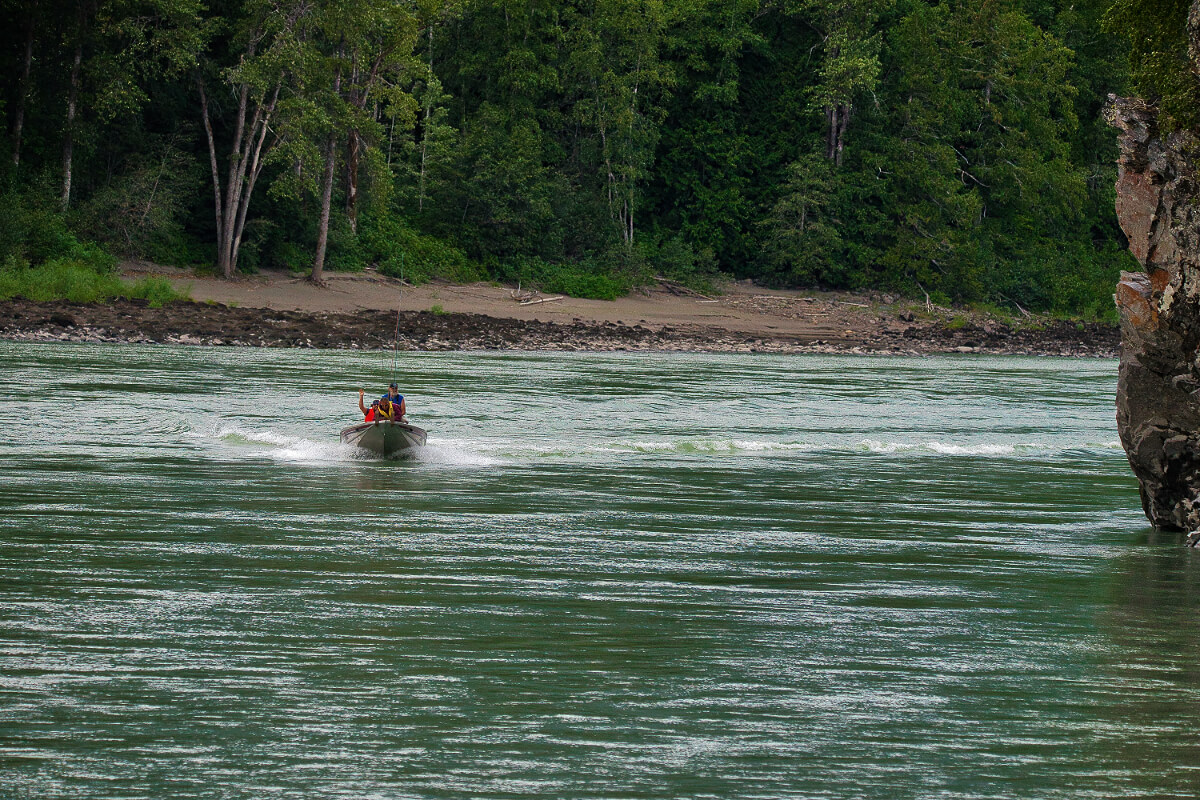
Kitselas Canyon
Enjoy the natural beauty of the Kitselas Canyon, one of the cultural jewels of north-western British Columbia. The Kitselas Canyon is one of Canada’s National Historic Sites. The canyon is located five miles down the river from “Little Wolf”. The main gathering area of the canyon is surrounded by rainforest and features stunning long houses and totem poles. A nature trail is leading from the main gathering area through a moss-covered forest, to the Totem Pole Garden and a canyon-viewing platform on the Skeena River.
A jet boat ride through the wild canyon can be arranged! When you arrive at the canyon by jet boat, you will get a real impression of how the Natives were navigating through the canyon in a canoe or how dangerous it was for the big Paddle-Wheelers to make their way through!
Kitselas Canyon is the only Native Village on the Skeena River, where remains of long houses and totem poles from the 1800s continue to exist!
Kitselas Canyon
Enjoy the natural beauty of the Kitselas Canyon, one of the cultural jewels of north-western British Columbia. The Kitselas Canyon is one of Canada’s National Historic Sites. The canyon is located five miles down the river from “Little Wolf”. The main gathering area of the canyon is surrounded by rainforest and features stunning long houses and totem poles. A nature trail is leading from the main gathering area through a moss-covered forest, to the Totem Pole Garden and a canyon-viewing platform on the Skeena River.
A jet boat ride through the wild canyon can be arranged! When you arrive at the canyon by jet boat, you will get a real impression of how the Natives were navigating through the canyon in a canoe or how dangerous it was for the big Paddle-Wheelers to make their way through!
Kitselas Canyon is the only Native Village on the Skeena River, where remains of long houses and totem poles from the 1800s continue to exist!

